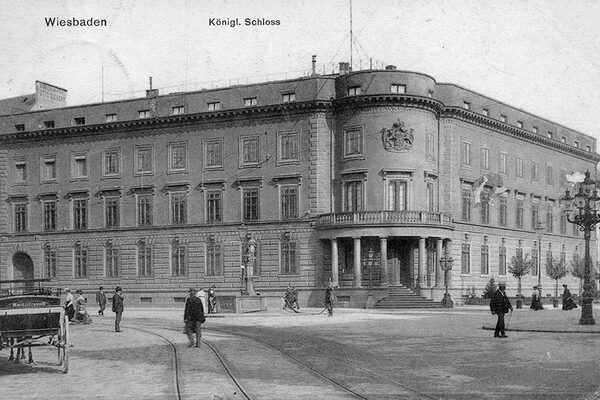Places of Historicism - City Palace
To demonstrate his proximity to the citizens, Duke Wilhelm decided to reside in the city center and thus establish a historical link to his ancestors.
The Wiesbaden City Palace
In order to demonstrate proximity to the citizens, Duke Wilhelm decided to reside in the city center and thus establish a historical connection to his ancestors.
Due to a lack of space, the palace was attached to the neighboring houses and was relatively modest in size. In 1835, Duke Wilhelm von Nassau commissioned the Grand Ducal Chief Building Director Georg Moller to plan the city palace, but was unable to move in himself - he died in 1839. Instead, his son Adolf became the first and only permanent lord of the palace in 1841. After Duke Adolf had to go into exile in 1866, the Kingdom of Prussia used the palace for the stays of Emperor Wilhelm I and Wilhelm II. In 1925 it was the seat of the British Army of the Rhine and in 1930 the Prussian State Palace Administration set up a museum in it.
After severe destruction during the Second World War, the palace was restored and became the seat of the Hessian State Parliament.
City Palace - Hessian State Parliament
Further information
City archive
Address
65197 Wiesbaden
Postal address
65029 Wiesbaden
Arrival
Notes on public transport
Public transportation: Bus stop Kleinfeldchen/Stadtarchiv, bus lines 4, 17, 23, 24 and 27 and bus stop Künstlerviertel/Stadtarchiv, bus line 18.
Telephone
- +49 611 313022
- +49 611 313977
Opening hours
Opening hours of the reading room:
- Monday: 9 a.m. to 12 p.m.
- Tuesday: 9 am to 4 pm
- Wednesday: 9 am to 6 pm
- Thursday: 12 to 16 o'clock
- Friday: closed
